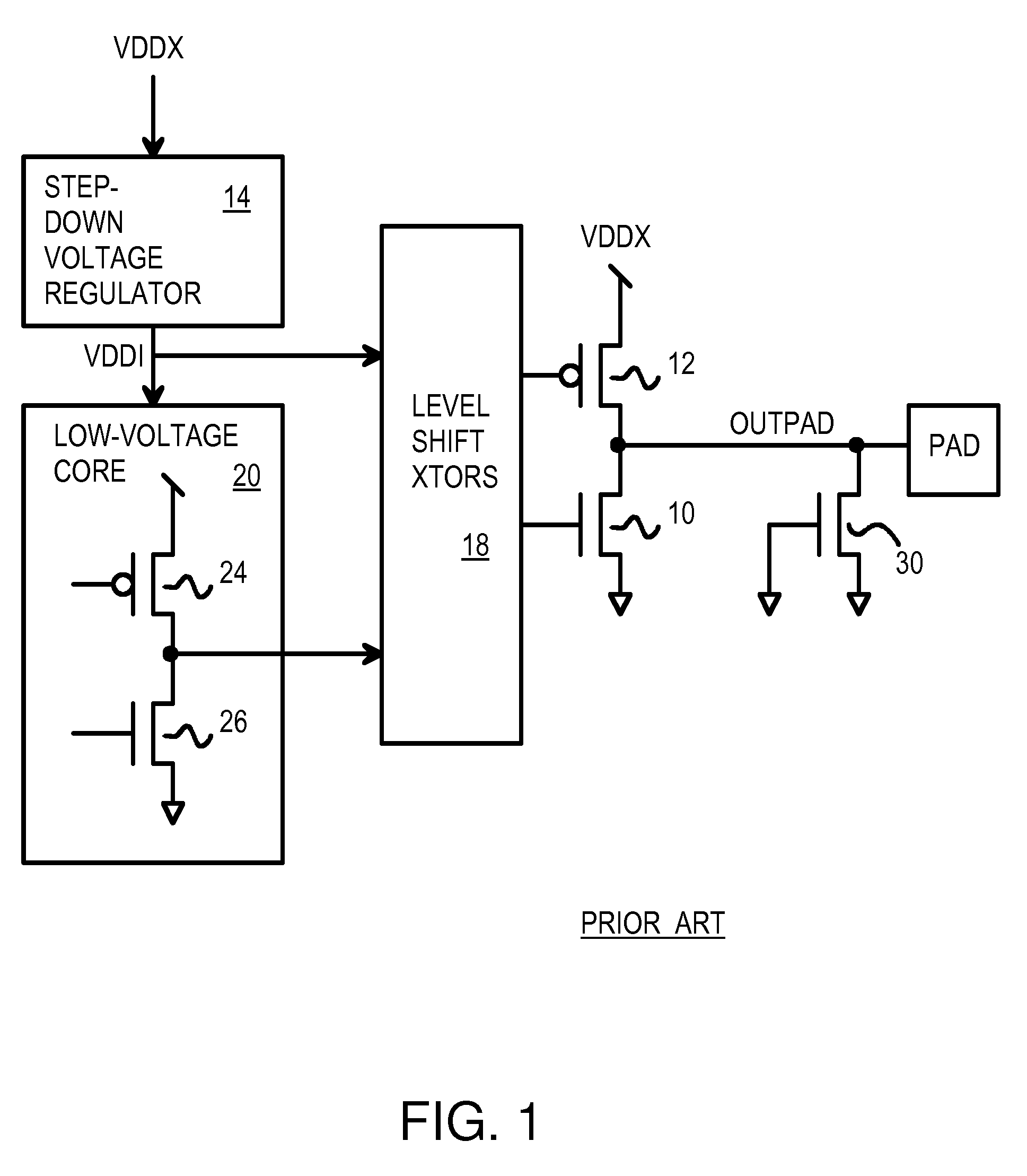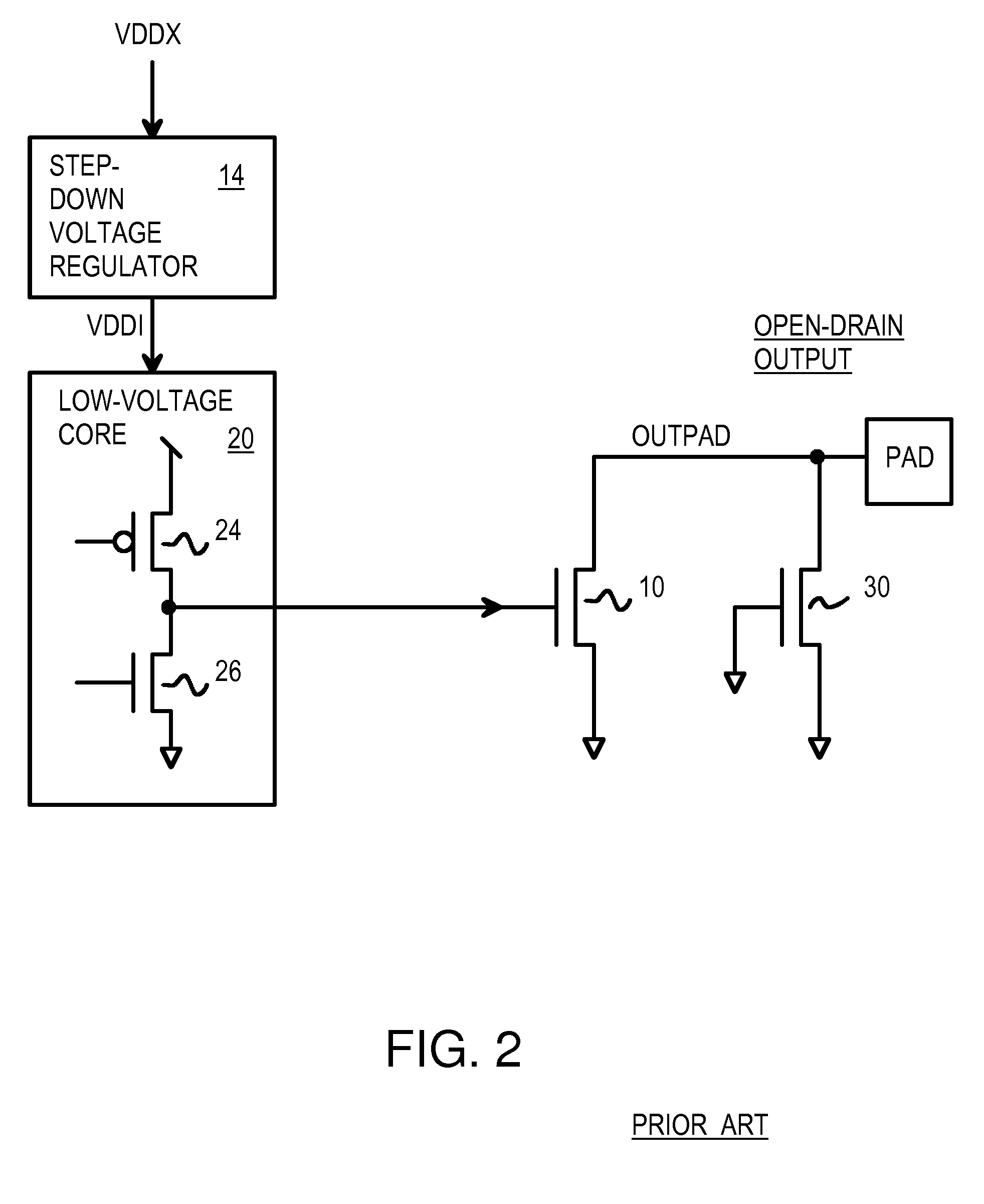ESD Protection using a Capacitivly-Coupled Clamp for Protecting Low-Voltage Core Transistors from High-Voltage Outputs
a capacitivly coupled clamp and core transistor technology, applied in the field of esd protection circuits, can solve the problems of consuming less power, reducing the reliability of field effect transistors, and prone to damage and failure of small electronic devices such as integrated circuits (ic)
- Summary
- Abstract
- Description
- Claims
- Application Information
AI Technical Summary
Problems solved by technology
Method used
Image
Examples
Embodiment Construction
[0049]The present invention relates to an improvement in ESD protection circuits. The following description is presented to enable one of ordinary skill in the art to make and use the invention as provided in the context of a particular application and its requirements. Various modifications to the preferred embodiment will be apparent to those with skill in the art, and the general principles defined herein may be applied to other embodiments. Therefore, the present invention is not intended to be limited to the particular embodiments shown and described, but is to be accorded the widest scope consistent with the principles and novel features herein disclosed.
[0050]The inventors have observed damage to core transistors while no damage occurs to periphery transistors in outputs and ESD protection circuits. Thus the ESD protection circuits are failing to protect the internal core circuits. This is especially observed for open-drain outputs that lack a level shifter.
[0051]FIG. 6 is a ...
PUM
 Login to View More
Login to View More Abstract
Description
Claims
Application Information
 Login to View More
Login to View More - R&D
- Intellectual Property
- Life Sciences
- Materials
- Tech Scout
- Unparalleled Data Quality
- Higher Quality Content
- 60% Fewer Hallucinations
Browse by: Latest US Patents, China's latest patents, Technical Efficacy Thesaurus, Application Domain, Technology Topic, Popular Technical Reports.
© 2025 PatSnap. All rights reserved.Legal|Privacy policy|Modern Slavery Act Transparency Statement|Sitemap|About US| Contact US: help@patsnap.com



